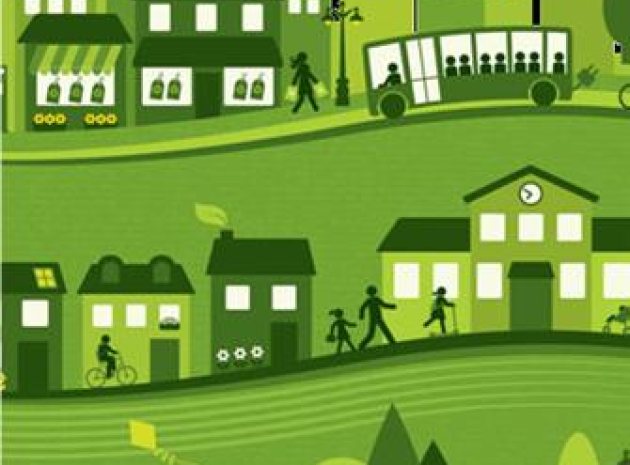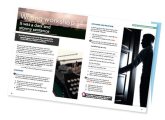Cultural anthropologist Margaret Mead once said, “Never doubt that a small group of thoughtful, committed citizens can change the world; indeed, it’s the only thing that ever has.” I believe this to be true. Young people make up 24% of the global population, yet even the smallest actions such as changing the way they work, being environmentally conscious, or altering their spending habits can have a dramatic effect on what the world looks like. Engaging this group, however – especially those in secondary school and older – can be a difficult task; so what steps can schools take to educate and inspire their students towards a greener future?
Reach out
Who is better placed to share knowledge about the area with schools than local businesses? Perhaps a representative from a renewable energy company could host an interactive ‘clean energy day’ to help young people understand how energy is made – for example, inviting both parents and students to take part in competitions such as cycling rallies to demonstrate how kinetic energy is created.
Schools could also host an alternative careers fair or an afterschool workshop to highlight the great variety of careers involved in studying and improving the environment. This could include conservationists who care for natural habitats, biological technicians who research life cycles of living organisms, or town planners who create strategies to help the community and the environment. Hosting a day like this can open students’ eyes to careers that may otherwise be under the radar, but which will ultimately be essential in shaping their future environment.
Schools should work with the local community to provide students with ‘outside of the classroom’ opportunities. This could be as simple as a field trip to the local marshes to explore how waste is affecting the ecosystem or even a trip abroad to explore poverty and the impact humans are having on the environment.
Providing opportunities to gain hands-on work experience is another great way to involve young people in helping the local community, while at the same time helping them to improve their CVs. Natural England has found that engaging young people with hands-on volunteer opportunities such as litter picking or volunteering with the local wildlife association allows them to gain practical skills and can be definitive in helping them to decide which career route they might want to pursue.
Take it home
Learning can also happen beyond the classroom through collaborative homework. Teachers can put learning in the hands of students by encouraging them to plan events and activities that they can then relay to parents, carers and friends in the community. Young people could create fundraising opportunities and campaigns to involve teachers, parents and students, like a walk to school campaign or a school-wide competition to recycle paper, providing them with the opportunity to build their confidence and independently run a project.
Lead by example
Furthermore, teachers could task students to monitor their home energy usage to prompt discussions with those in their households on the importance of tracking energy and heating consumption and what effects this can have on the family. This may result in additional proactive behaviours such as turning plugs off and switching light bulbs to energy saving versions, as a result of understanding energy consumption in their home.
Of course, it’s important practice what you preach – and schools should therefore look to be as energy efficient and environmentally friendly as possible themelves. Speaking to local energy providers about how to save money and aid the environment is a good first move. This may involve simple things such as turning down the heating a few degrees, switching to LED lighting to reduce energy, or growing greens in a school garden – or bigger steps, like switching how the school is powered by using electricity generated by solar panels, or heated, using Air Source Heat Pumps.
Schools must take charge of providing proactive and insightful environmental activities during term time in order to improve our environment, as well building as valuable relationships with the local community. Ultimately, young people will be the ones to inherit this environment, and so it is imperative that they learn the importance of investing time, effort and resources into protecting and rehabilitating it.
About the author
Mark Stevenson is managing director of Bright Spark Energy (brightspark.energy)









